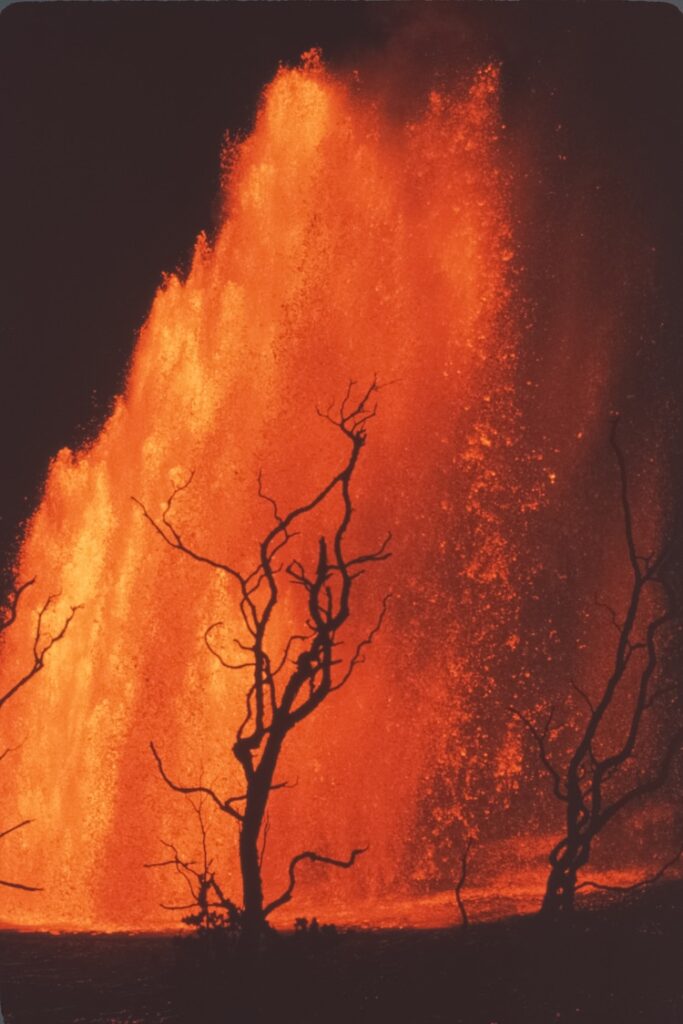Amazingly, the Kilauea volcano in Hawaii’s Mauna Ulu eruption lasted for 1,774 days over the course of five years. At the time, it was Kilauea’s longest-lasting eruption, producing 460 million cubic yards of lava. From 1969 through 1974, the public could view the spectacular eruption from viewing platforms, and it produced a number of remarkable natural phenomena that are infrequently seen during volcanic eruptions.

The US Geological Survey recently published a picture of a distinctive dome fountain that J.B. Judd captured in 1969. The symmetrical dome fountain, one of twelve fountaining events that took place during the eruption’s first year, was 65 feet (20 meters) tall. Lava was disseminated so far during the fountaining events that it poured into the ocean at a distance of 7.5 kilometers.
Dome fountain of episode 10, October 10–13, 1969, eruption of Kilauea Volcano. This dome fountain is about 20 m (65 ft) high. Symmetrical dome fountains such as this are rare. #Tbt #HI @Volcanoes_NPS pic.twitter.com/sKSQaVINKs
Loading...
— USGS (@USGS) March 29, 2018
The symmetrical dome fountain, which ran from October 10 to October 13, lasted for several days and may have reached a height of up to 245 feet. What exactly makes this dome fountain so distinctive? Geyser-like upward lava jets are a characteristic fountaining phenomenon. It is rather unique to witness a glowing ball formed of lava, such as Epcot Center. The domed fountain looks to be floating on the sea in the photograph, yet the event was on land. The waves up front are actually ripples in the lava.
When gas bubbles up in the molten rock, an eruption of lava from a fissure, vent, or lava lake is triggered, the molten rock expands and explodes, causing fountaining. Though Mauna Ulu is no longer the longest-running eruption (that honor now belongs to Pu’u “, which has been active since 1983), the image serves as a reminder of how active Hawaii’s volcanoes have been throughout history.
The Mauna Ulu eruption of Kilauea Volcano, which lasted from 1969 to 1974, is depicted in photos from the US Geological Survey’s archive.









